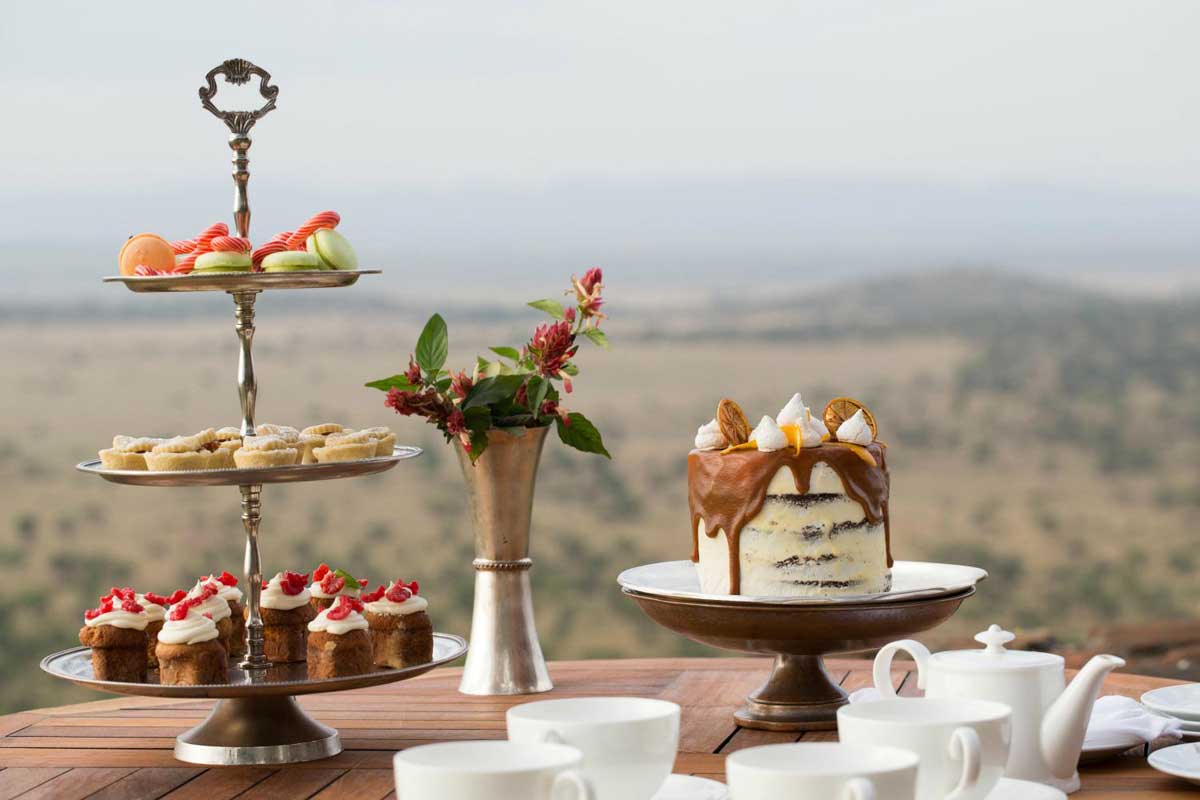Before we delve head on into the variety of foods on offer at safari lodges, we need to explain the dining experience while staying in a private reserve. Meal times and access to food is quite different to a resort or hotel stay – there is no room service or bar menu; but rather set meal times where guests gather together to enjoy exceptional safari cuisine. Meals are served around waterholes, on decks, in dining areas, around campfires in outdoor bomas, on the pool terrace or even in the midst of thickets of your chosen reserve.
Times in the bushveld are centred around big game activity and when the predators are most active. This means meal times adhere to the clock of the wildlife that roams the landscape. Most lodges will have rusks, fruit, biscuits and tea available throughout the day – sometimes this will remain in the kitchen and bar area because of pesky vervet monkeys! Going on safari pretty much means you are governed by the behaviour of wildlife!
A typical day of eating would look something like this :
- Early rise for game drive – normally around 5:30ish. Coffee and homemade rusks are served.
- Coffee stop mid game drive,. Coffee, hot drinks, rusks and fruit platters are generally served.
- Return to lodge for breakfast, or enjoy a bush breakfast. Normally around 9ish.
- Lunch served at roughly 13:30 and is normally a light, but a languid affair.
- High tea is served shortly before game drive – normally 15:30 ish. A high end lodge will ensure plenty of locally made desserts are served.
- Dinners are a lengthy affair that always end in a campfire session in the boma area.
Now back to the actual cuisine.
The standard of meals served will vary from lodge to lodge and camp to camp. But overall, South Africans are foodies and have high standards when it comes to food. The quality of beef, game and other meats is unsurpassed and there’s always a careful focus on using homegrown produce in meals. Being such a diverse nation with a rich cultural heritage means that there are plenty of flavours, experimenting with elements and crossing over of various cultural eating traditions. Chefs here love to combine the traditional with modern flair.
One of the things staple to a South African’s diet is a braai, which is more than just a way of cooking. It’s the opportunity for the head chef (braaimaster) to cook meat and vegetables over an open fire while everyone sits around talking. Then of course, Biltong is a snack that is talked about – even over international waters. We love to put biltong in salads (blue cheese, pear and biltong), on pizzas and where ever we can. Biltong? It’s spiced and dried meat.
It is also a known fact that South African’s mix sweet with savoury, and tend to add fruit to their cooking more often than not. We’re talking apricots with meat, pineapple on pizza, strawberries in salads and a whole lot more.
Game Drive Snacks : Biltong
Late game drives start late afternoon and there’s always an obligatory sunset stop. This is when guests disembark from the vehicle and enjoy a pre-ordered drink of their choice along with a few snacks. Snacks can be anything from gourmet light finger foods to simple traditional snacks. One thing’s for sure, most lodges will serve a bowl of biltong and droewors. This is dried sausage and dried, cured meat. There will no doubt be crisps, an assortment of nuts and other small things on which to snack. Morning game drives do a coffee stop and often have muffins, rusks and local fruits on offer.

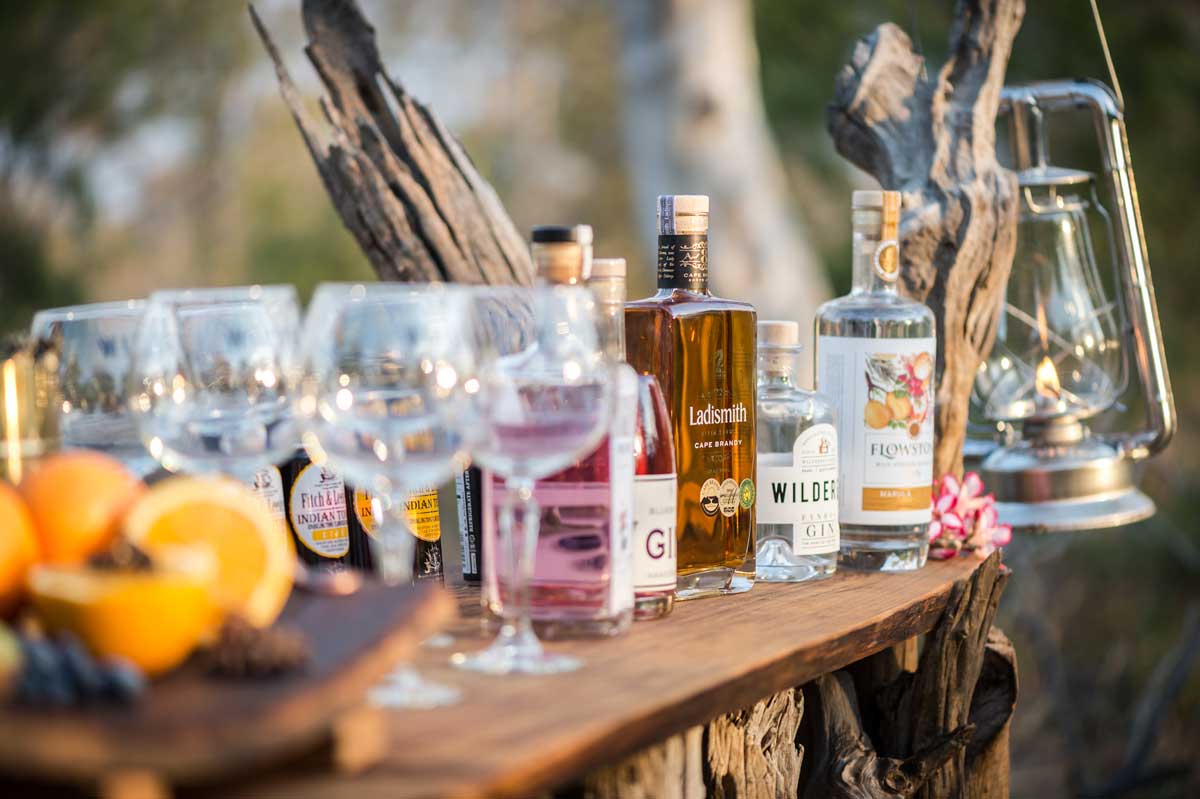
Breakfast : Continental and English with a South African Twist
Breakfast is quite standard, but will probably be served with an array of local sauces and homemade chutneys. There is normally a continental buffet and then a hot breakfast that can include anything from a full English to a frittata; and the standard food served in an imaginative way. You’d need to confirm with the lodge how they work their breakfast menu.
Dinners : Potjies and Braais
Dinners are extravagant and lavish, and always end up with a session around the campfire in the boma. Dinners are normally served at the lodge, on the edge of a waterhole, in the bushveld or anywhere unique to the lodge/camp. Chefs love nothing more than to introduce South African cuisine into the menu, and thus a braai is quite common practice throughout. A braai cannot be missed ! A selection of meats and vegetables are cooked on an open fire, and an array of sides served with your meal. A potjie is better version of a stew and is cooked in a cast iron pot over an open fire. Guests can also expect elite 7 course sit down meals, and luxury dining. Your choice of lodge will have its own approach to food.
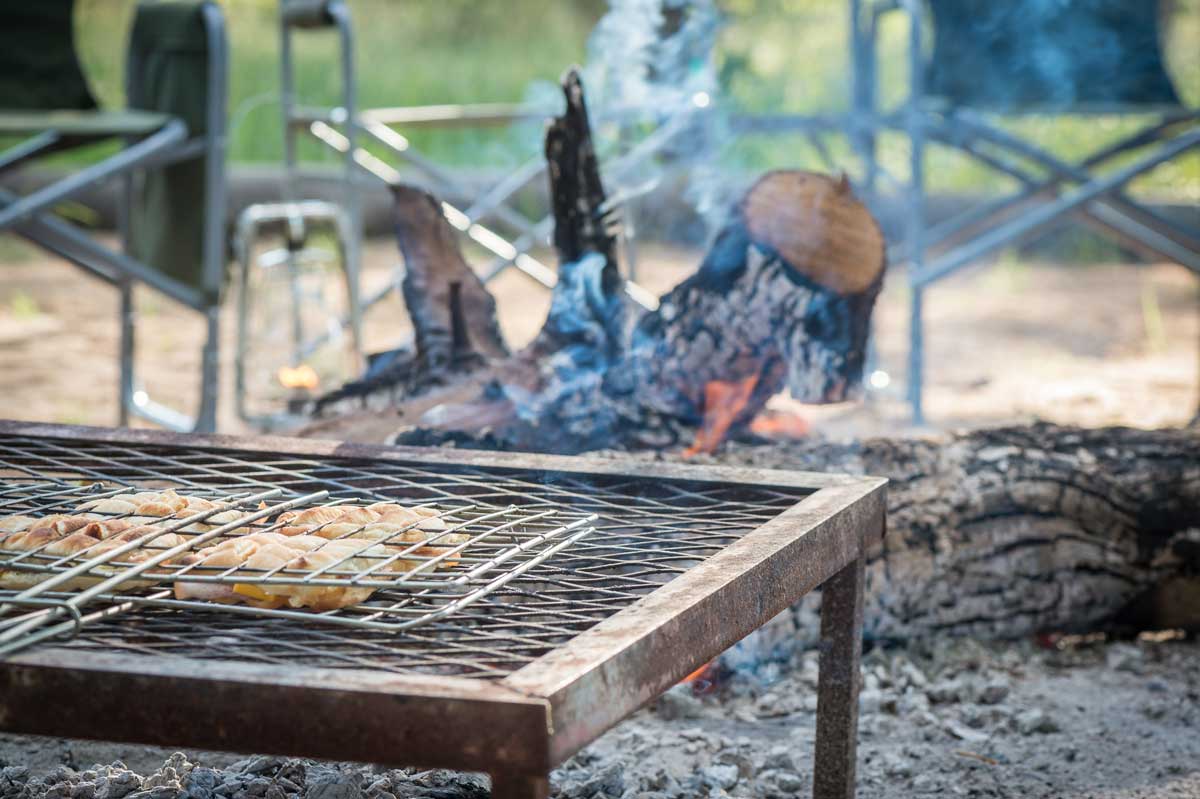
Lunches : Bobotie or Something Light
Lunches are always an affair of food. They can be anything from a light quiche and salad, to a traditional babotie or simple wraps. Babotie is a dish made with mince that is slightly curried and topped with a layer of rich, savoury custard. There would probably be a butternut squash version for vegetarians. Quiche seems to be popular at a variety of lodges. The more food focused a lodge is, the more gourmet the meal.
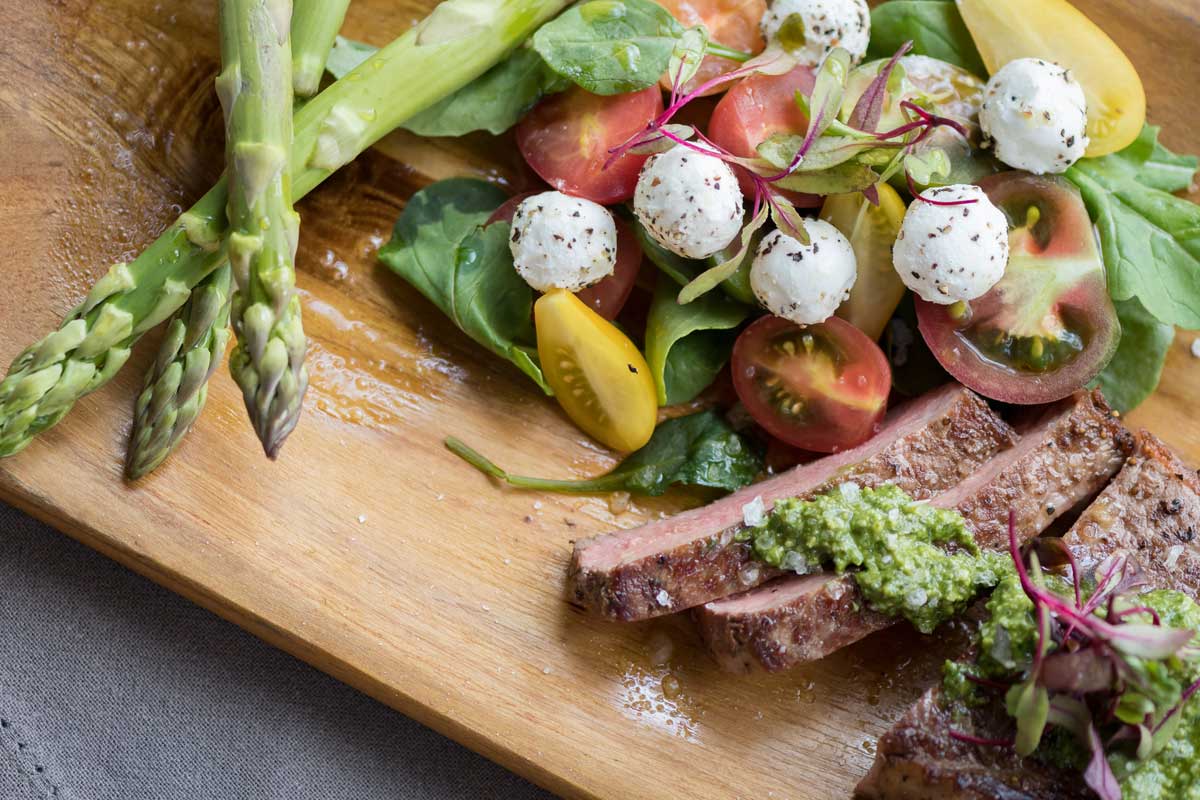
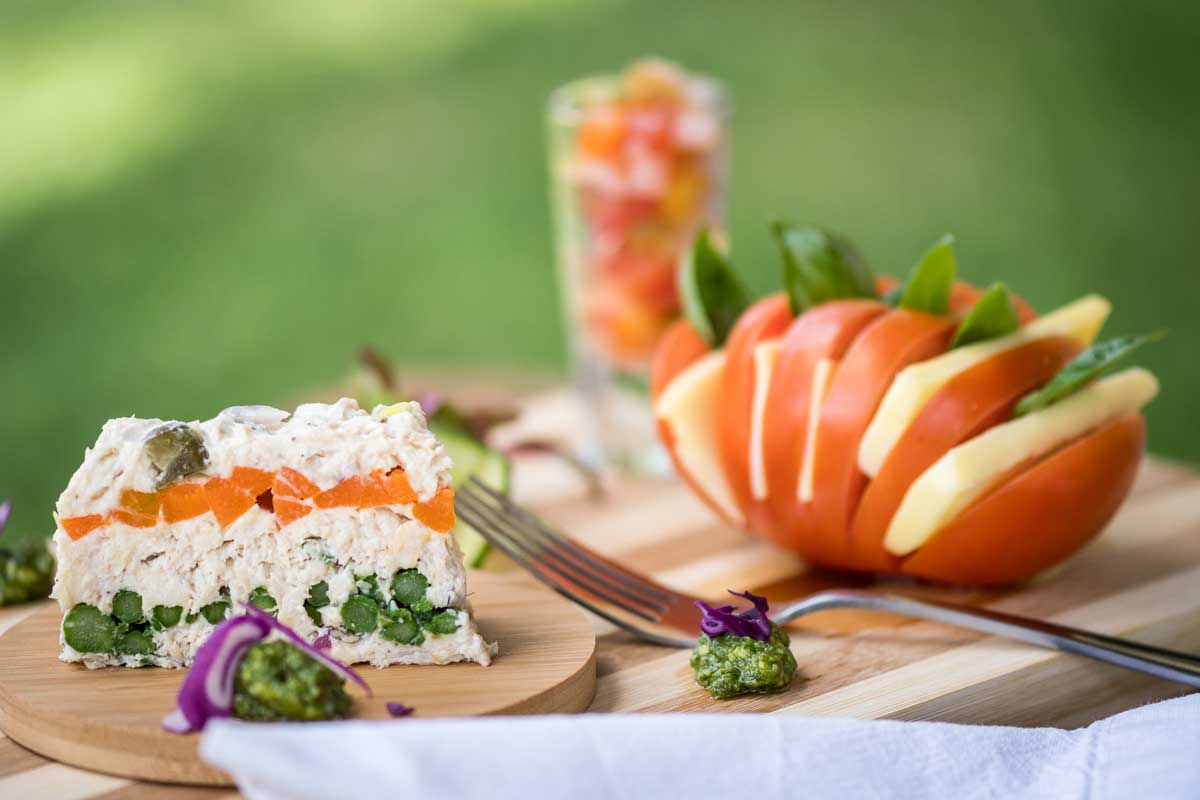
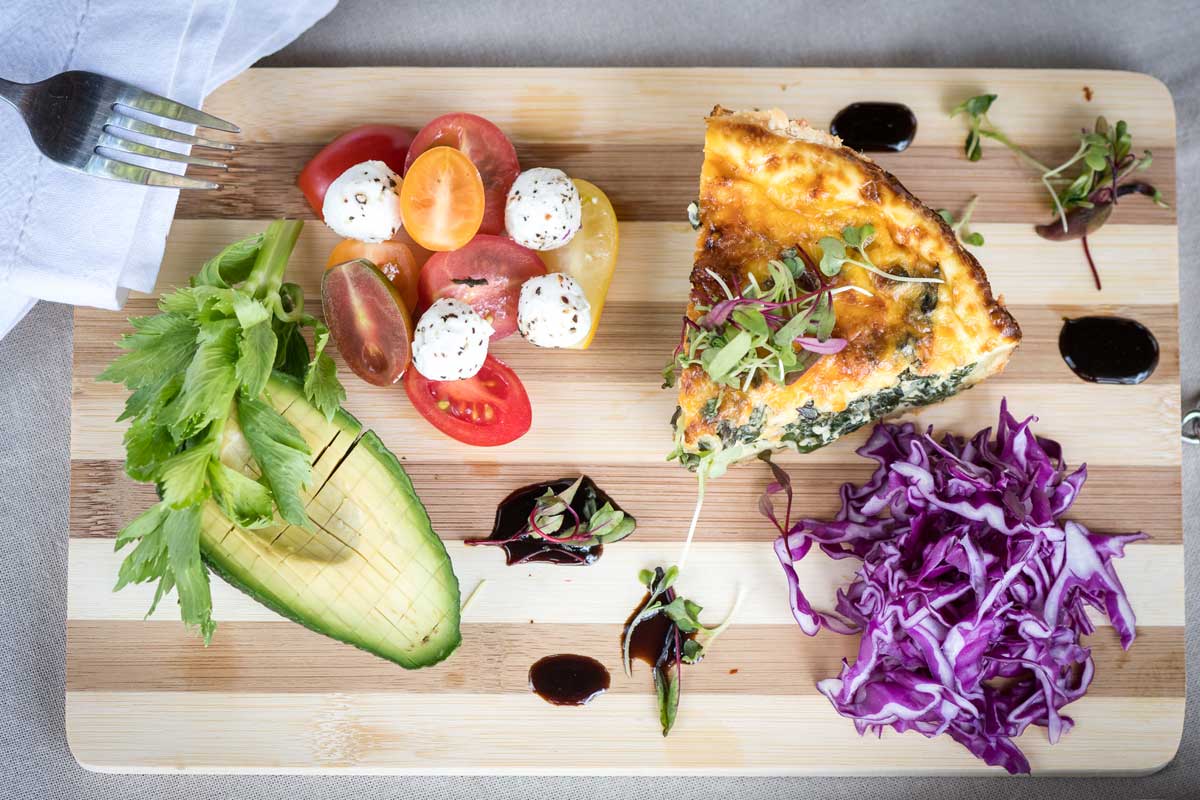
Sides : Salads and Pap
South Africans love to create gourmet salads with a mix of greens and fruit ! I’m talking cous cous salads with pomegranate seeds, green salads with balsamic and strawberries and Greek salads with grapes. Our salad style is Mediterranean with a South African twist !
Sides for dinner might include pap, sadza or mealie meal. These can be likened to polenta.
Vegetables would probably include things like spinach, butternut squash (local favourite) and sweet potatoes. Once again, this is all lodge dependant.
Desserts : Milk Tart, Malva Pudding and Koeksisters
South African’s have a sweet tooth. There are a number of desserts enjoyed by locals and visitors to South Africa; and the list of traditional desserts is endless. There’s Milk Tart which is a cinnamon custard biscuit encrusted tart, Malva Pudding which is a syrup soaked sponge cake, koeksisters which are doughy fried strips twisted together and soaked in syrup; and there are plenty of dishes created with condensed milk. The list is endless, and so is the sugar high.

Do your research when it comes to staying at lodges and don’t be afraid to find out about their menu and cuisine on offer. Lodges will always cater to your dietary requirements, while ensuring that and food is our game. Our recommendation? Go on diet before you depart for your safari. It’s almost guaranteed that you will put on weight. We hope this blog about the food and dining experience while on safari in South Africa has helped you understand the safari dining experience.

